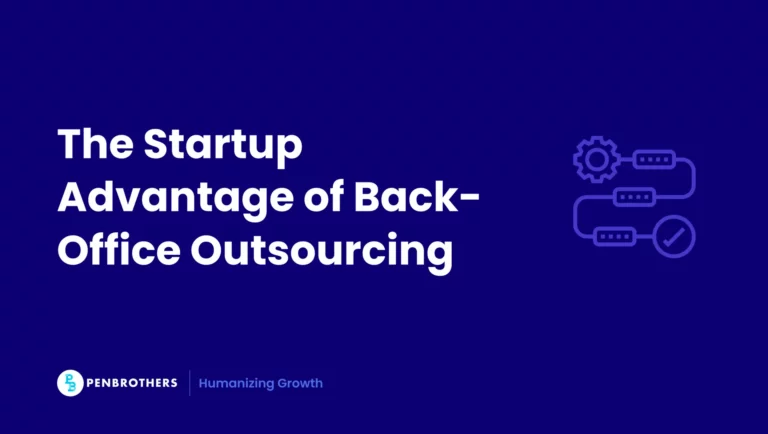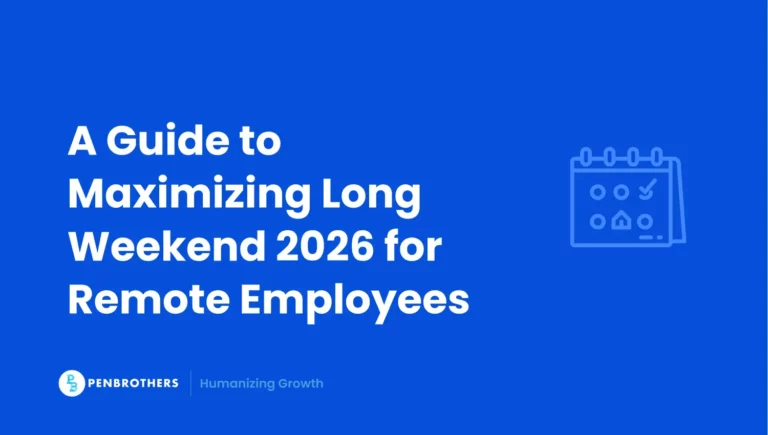It’s September 1 in Manila. José Mari Chan’s Christmas songs play on jeepney radios, parols light up shop windows, and stores roll out holiday décor. In offices, chatter shifts to year-end plans, deadlines are pulled forward, and managers ready teams for the final sprint.
This is the start of the Ber Months, the unofficial launch of the world’s longest Christmas season, lasting over four months. For global employers, it’s a uniquely Filipino period where cultural tradition fuels workplace energy, motivation, and engagement.
Key Takeaways
- A Four-Month Cultural and Economic Event: The “Ber Months” (September-December) mark the world’s longest Christmas season, a significant cultural and economic period in the Philippines. For businesses, this period brings a unique wave of workplace energy, motivation, and urgency as teams sprint to meet goals before the holidays.
- Family Obligations are a Primary Motivator: The primary driver for the heightened productivity and willingness to take on extra work during this season is family. Employees are highly motivated to earn more for holiday gifts, feasts, and travel, all leading up to the legally mandated 13th-month pay in December.
- A Measurable Impact on the National Economy: This period is not just a cultural phenomenon; it’s a major economic driver. Consumer spending and retail activity surge, and the national GDP sees a significant boost in the fourth quarter, amplified by a peak in remittances from overseas Filipinos sending money home for the holidays.
- A Strategic Opportunity for Global Managers: For international managers, the Ber Months are a key strategic window. By acknowledging the season, planning critical deadlines before mid-December, and aligning team goals with the cultural desire to “finish strong,” leaders can harness this natural boost in morale and productivity.
What Are the Ber Months? More Than Just Early Christmas
The Ber Months refer to the last four months of the year, September, October, November, and December, named for their “-ber” endings. In the Philippines, however, this period often stretches into January as post-holiday gatherings and Feast of the Three Kings celebrations extend the festive spirit.
The tradition has deep roots in Spanish colonial Catholic practices like Simbang Gabi (a series of dawn masses leading up to Christmas), lavish fiestas, and extended family gatherings. Over time, it has evolved into one of the world’s longest Christmas seasons, with some malls and radio stations kicking off celebrations the moment September arrives.
For more on how the Philippines uniquely celebrates the holidays, explore Filipino Christmas traditions in greater detail.
What Season Are the Ber Months in the Philippines?
For global employers, a common point of confusion is the climate during this festive period. The Ber Months do not align with a single season but rather a crucial transition.
According to the Philippine Atmospheric, Geophysical and Astronomical Services Administration (PAGASA), the Ber Months begin during the tail end of the rainy (or wet) season which typically runs from June to November.
- September and October are still part of the peak typhoon season, requiring businesses to have robust business continuity plans for remote teams.
- By late November and December, the climate transitions into the Amihan (Northeast Monsoon) season. This brings cooler, drier air, marking the start of the pleasant “cool” dry season, which coincides with the peak of the Christmas celebrations.
Understanding this weather transition is key for workforce planning, especially for roles in logistics, retail, and on-site operations.
The Ber Months’ Effect on Workplace Energy
In the Philippines, the Ber Months create a distinct workplace rhythm:
- Heightened urgency – Teams push to hit annual targets before holiday breaks.
- Increased overtime – Many employees volunteer for extra hours to boost income ahead of big family expenses.
- Tighter collaboration – Teams bond over planning year-end events, charity drives, and gift exchanges.
This surge in energy isn’t just anecdotal. Economic indicators reflect it. In Metro Manila, the General Retail Price Index (GRPI), a key measure of consumer demand, posted a 1.4% year-on-year growth in August 2025, according to the Philippine Statistics Authority (PSA). This indicates sustained consumer activity and economic momentum leading into the peak holiday months.
For global managers, this means project timelines and output can accelerate in Q4, if you plan around the upcoming holidays. Understanding the Philippine holiday calendar is critical; here’s a full guide to Philippine holidays for workforce planning.
Family as the Driving Force of Motivation
At the heart of this seasonal productivity spike is family. In Filipino collectivist culture, the holidays are a time to give generously to relatives, not just immediate family, but extended kin. Employees often:
- Budget for gifts, feasts, and travel to their hometowns
- Send balikbayan boxes (care packages) to relatives abroad or in rural areas
- Save or maximize 13th-month pay, which is legally mandated to be paid before December 24.
This family-driven motivation has a measurable effect on work ethic. Employees are more willing to take on extra shifts, finish projects faster, and push for performance bonuses during the Ber Months to ensure they can meet holiday expenses.
Seasonal Job Surges and Economic Activity
The Ber Months are also peak season for certain industries:
- Retail – Stores extend hours and hire seasonal staff to meet shopping demand.
- Hospitality – Hotels, restaurants, and resorts see booking surges for reunions and year-end parties.
- Logistics – Courier and shipping companies expand their workforce to handle increased e-commerce deliveries.
Under Philippine labor law, “seasonal employees” are those hired for recurring peak periods such as the holidays. They may gain “regular seasonal” status if rehired each year, and they’re entitled to benefits during active employment.
This seasonal activity is a major contributor to the country’s economic performance. The Philippine Statistics Authority (PSA) reported that the Gross Domestic Product (GDP) grew by 5.3% in the fourth quarter of 2024. This growth is significantly amplified by remittance inflows from overseas Filipinos, which hit an all-time high of $38.34 billion for the full year 2024, according to Bangko Sentral ng Pilipinas (BSP). These inflows traditionally peak in December as workers send money home to fund family celebrations.
How Festivity Shapes Work Relationships
Festive culture doesn’t just impact output, it shapes workplace relationships:
- More generosity – Gift exchanges and team meals foster camaraderie.
- Higher morale – A celebratory atmosphere boosts daily motivation.
- Collaborative spirit – Teams rally to meet shared goals before the break.
However, without clear boundaries, the season can also lead to productivity dips, especially during peak holiday weeks. For managers, the challenge is balancing cultural celebration with operational continuity. Learn how to manage bank holidays effectively for remote teams to maintain momentum.
Lessons for Employers Working With Filipino Teams
For global companies, the Ber Months offer more than cultural color, they present a business advantage when managed well. Here’s how:
- Plan deliverables early – Set critical deadlines by mid-December to avoid the year-end holiday rush. Account for vacation leaves, reduced availability in the last two weeks of December, and slower response times from external partners.
- Acknowledge cultural motivators – Understand that family obligations and holiday traditions are powerful drivers of performance during this season. Recognizing these motivators in communications and incentives can strengthen employee engagement.
- Integrate festive engagement – Organize virtual holiday parties, send care packages, or run themed contests to keep remote teams connected and morale high. Done well, this boosts loyalty without derailing productivity.
- Use data for workforce planning – Leverage PSA’s OpenSTAT to anticipate seasonal hiring surges, industry demand spikes, and potential labor supply shifts, especially in retail, logistics, and customer service.
- Factor in adjacent holidays – While the Ber Months run from September to December, earlier cultural events like Ghost Month in August and other Philippine holidays can influence project timelines and workforce availability heading into the season.
How Global Managers Can “Welcome” the Ber Months
For global teams, acknowledging the start of the Ber Months is a powerful, low-cost way to build rapport and cultural alignment. It signals that you recognize and respect the cultural rhythms that are important to your Filipino team members.
Here are a few practical ways managers can engage:
- Acknowledge It Directly: A simple “Happy Ber Months!” message in a team chat on September 1st goes a long way. It shows you’re culturally aware and share in the team’s excitement.
- Discuss Holiday Plans Early: Use the start of the season to open a dialogue about holiday leave. Asking “What are your plans for Christmas?” in September allows you to forecast availability and plan project deadlines collaboratively, avoiding a last-minute rush in December.
- Launch a “Pre-Holiday” Sprint: Frame the Q4 push positively. Instead of a stressful crunch, position it as a “Ber Months Sprint” with the shared goal of finishing major projects by mid-December so the team can fully enjoy their hard-earned holiday break.
- Share the Music: Nothing signals the start of the season like Filipino Christmas music. Sharing a link to a classic José Mari Chan song is a simple, fun way to connect with the team’s festive spirit.
Final Thoughts
For Filipino teams, the Ber Months are more than a countdown to Christmas. They’re a motivation-rich season, where cultural tradition and economic activity align to produce some of the year’s most engaged, high-energy work periods.
For global employers, this isn’t just a festive curiosity, it’s a strategic planning window. By aligning deliverables, respecting cultural rhythms, and engaging teams meaningfully, companies can turn the Ber Months into a period of stronger output and deeper loyalty.
And when January comes and the decorations come down, the momentum built during these months can carry your team confidently into the new year.
Frequently Asked Questions
The “Ber Months” are the last four months of the year: September, October, November, and December. They are so named because they all end in “-ber” and they collectively mark the unofficial start of the world’s longest Christmas celebration.
This period covers a climatic transition. It begins in September/October during the end of the rainy (wet) season, which is also the peak of typhoon season. It then transitions in late November and December to the Amihan (Northeast Monsoon) season, which brings cooler and drier air.
This period creates a unique workplace dynamic. Employees are often more motivated, collaborative, and willing to take on overtime to earn extra money for holiday expenses. For managers, this is a strategic time to set clear goals and harness that high energy to meet annual targets before the year ends.
The 13th-month pay is a legally mandated bonus in the Philippines that must be paid by December 24th. It is a core part of the Ber Months’ economic cycle, as it provides employees with the funds they have been budgeting for their major holiday celebrations and family expenses.
A foreign manager can build significant rapport by simply acknowledging the season (e.g., “Happy Ber Months!”). Strategically, they should plan all critical project deadlines for early or mid-December, as many employees will take their vacation leave in the last two weeks of the month to be with their families.






